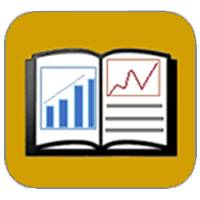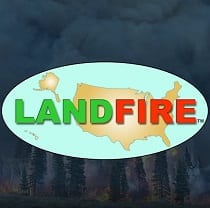Search Results: 2V0-11.24 PrüfungGuide, VMware 2V0-11.24 Zertifikat - VMware Cloud Foundation 5.2 Administrator 💾 Suchen Sie auf ➥ www.itzert.com 🡄 nach kostenlosem Download von ⮆ 2V0-11.24 ⮄ 🏛2V0-11.24 Pruefungssimulationen
Read the report.
In December of 2017, the Federal Emergency Management Agency (FEMA) Administrator requested the Department of Homeland Security DHS) Science and Technology (S&T) research new and emerging technology that could be applied to wildland fire incident response, given the loss of life that occurred in California during the fall of 2017 in Santa Rosa and Ventura.
In response to the request, DHS S&T—in collaboration with FEMA, the U.S. Fire Administration (USFA), and other key stakeholder experts—determined wildland urban interface (WUI) incidents and life-saving functions as the optimal areas for DHS S&T to explore technology innovation. As a result, S&T formed an Integrated Project Team (IPT) and initiated the WUI Fire Operational Requirements and Technology Capability Analysis Project. Over the course of the project, the IPT identified areas of innovation in wildland fire incident relating to wildland fire preparedness and mitigation and enhanced wildland fire suppression practices, including resistant infrastructure planning, building materials, and building codes. To meet the Administrator’s request, however, the IPT focused its efforts on requirements for improving operational capabilities and incident response to save lives in WUI fires.
View brief.
This brief was developed to help guide collaborative landscape planning efforts, through use of a framework of seven core principles and their implications for management of fire-prone interior forest landscapes.
Key findings included:
- Historically, forests were spatially heterogeneous at multiple scales as a result of interactions among succession, disturbance, and other processes.
- Planning and management are needed at fine to broad scales to restore the key characteristics of resilience.
- Landscapes must be viewed as socio-ecological systems that provide services to people within the limited capacities of ecosystems.
- Development of landscape-level prescriptions is the foundation of restoration planning.
Access book.
This open access book synthesizes current information on wildland fire smoke in the United States, providing a scientific foundation for addressing the production of smoke from wildland fires. This will be increasingly critical as smoke exposure and degraded air quality are expected to increase in extent and severity in a warmer climate. Accurate smoke information is a foundation for helping individuals and communities to effectively mitigate potential smoke impacts from wildfires and prescribed fires. The book documents our current understanding of smoke science for (1) primary physical, chemical, and biological issues related to wildfire and prescribed fire, (2) key social issues, including human health and economic impacts, and (3) current and anticipated management and regulatory issues. Each chapter provides a summary of priorities for future research that provide a roadmap for developing scientific information that can improve smoke and fire management over the next decade.
View report.
To collect partner and employee input on the Wildfire Crisis Strategy 10-year Implementation Plan, the Forest Service and National Forest Foundation hosted a series of roundtable discussions in the winter and spring of 2022.
Individual roundtables were focused on each of the Forest Service regions and at the national level, for a total of ten roundtables. This report is a synthesis of key themes and opportunities for action that emerged from across the ten roundtables. The National Forest Foundation prepared individual summaries of the ten roundtables, available online. Also available is the Intertribal Timber Council’s report on the Intertribal Roundtable they hosted in April 2022 in coordinationwith the Forest Service.
Webinar recording.
Attendees will:
- Receive updates from the Forest Service on the Collaborative Forest Landscape Restoration Program (CFLRP);
- Learn about an approach for building and maintaining a solid foundation for collaborative efforts using the 4-Ps (Purpose, People, Process, and Products);
- Hear from speakers about how CFLRP changed their collaborative efforts; and
- Be able to ask questions and join in a discussion about the process of building and maintaining a solid foundation for collaboration.
Webinar recording.
The LANDFIRE program is aware that our stakeholders are interested in obtaining more comprehensive 3D vegetation structure information to inform vegetation and species mapping, carbon accounting, and physics-based fire behavior models. Understanding how to provide annually updated 3D vegetation and fuel metrics in a way that is useful to the most stakeholders and accounts for the logistical and resource constraints within the program is a LANDFIRE goal over the next few years. LANDFIRE wants to connect with innovators who are motivated by the shared challenge of pulling together disparate data sources across scales and dimensions into logical machine learning or deep learning classification methodologies that are accurate, repeatable, and usable by managers. We hope to build these relationships by increasing our engagement across research and management communities to create a new foundation for LANDFIRE.
Effects of drought on forests and rangelands in the United States: A comprehensive science synthesis
View synthesis.
This assessment establishes the scientific foundation needed to manage for drought resilience and adaptation. Focal areas include drought characterization; drought impacts on forest processes and disturbances such as insect outbreaks and wildfire; and consequences for forest and rangeland values. Large, stand-level impacts of drought are already underway in the West, but all U.S. forests are vulnerable to drought. Drought-associated forest disturbances are expected to increase with climatic change. Management actions can either mitigate or exacerbate the effects of drought. A first principal for increasing resilience and adaptation is to avoid management actions that exacerbate the effects of current or future drought. Options to mitigate drought include altering structural or functional components of vegetation, minimizing drought-mediated disturbance such as wildfire or insect outbreaks, and managing for reliable flow of water.
View article.
Cloud-to-ground lightning with minimal rainfall (“dry” lightning) is a major wildfire ignition source in the western United States (WUS). Although dry lightning is commonly defined as occurring with <2.5 mm of daily-accumulated precipitation, a rigorous quantification of precipitation amounts concurrent with lightning-ignited wildfires (LIWs) is lacking. We combine wildfire, lightning and precipitation data sets to quantify these ignition precipitation amounts across ecoprovinces of the WUS. The median precipitation for all LIWs is 2.8 mm but varies with vegetation and fire characteristics. “Holdover” fires not detected until 2–5 days following ignition occur with significantly higher precipitation (5.1 mm) compared to fires detected promptly after ignition (2.5 mm), and with cooler and wetter environmental conditions. Further, there is substantial variation in precipitation associated with promptly-detected (1.7–4.6 mm) and holdover (3.0–7.7 mm) fires across ecoprovinces. Consequently, the widely-used 2.5 mm threshold does not fully capture lightning ignition risk and incorporating ecoprovince-specific precipitation amounts would better inform WUS wildfire prediction and management.
View article.
This study presents a method and case study to evaluate the effectiveness of restoration of riparian vegetation using a web-based cloud-computing and visualization tool (ClimateEngine.org) to access and process remote sensing and climate data. In each study area, the post-restoration NDVI-precipitation relationship was statistically distinct from the pre-restoration relationship, suggesting a change in the fundamental relationship between precipitation and NDVI resulting from stream restoration. We infer that the in-stream structures, which raised the water table in the adjacent riparian areas, provided additional water to the streamside vegetation that was not available before restoration and reduced the dependence of riparian vegetation on precipitation. This approach provides a cost-effective, quantitative method for assessing the effects of stream restoration projects on riparian vegetation.
Launch web application.
Climate Engine uses Google’s Earth Engine for on-demand processing of satellite and climate data via a web browser.
Features include:
- On-demand value and anomaly mapping
- Time series and statistical summaries
- Downloadable results in GeoTIFF format, and time series results as .csv or .xlsx format
- Share map or time series results with web URL links






